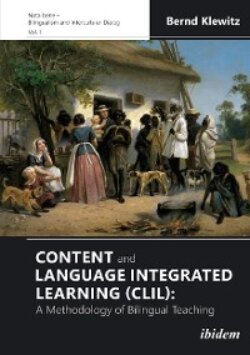Читать книгу Content and Language Integrated Learning (CLIL): A Methodology of Bilingual Teaching - Bernd Klewitz - Страница 15
2.3 The Universal Grammar and Noam Chomsky
ОглавлениеAs part of cognitive psychology, van Parreren focused on the problem of interference in learning processes, especially the relationship between two languages (L1 and L2) in language acquisition. Contrary to recent research results, where more complex distinctions are discussed, such as positive and negative interferences as well as inferences, his assumption of the mental dual track system posited that the linkage of two systems, in this case of two languages, would cause detrimental effects. Especially if languages were characterized by similarities in structure and lexis, there would be negative effects: one linguistic element (from L1) would influence another one (from L 2), because students would tend to create a cognitive linkage between related elements. Foreign language teaching, as a follow-through, needed to aim at preventing connections between mother tongue and foreign language(s), which would support convergence processes rather than facilitating correct and sustainable learning results. Mental tracks of the foreign language system would assimilate with the mother tongue elements and the “clumping factor” of similar elements would connect otherwise disjoined tracks of L1 and L2. Van Parreren explains this process of homogenizing when originally separated mental tracks are merged into one system (clumping factor). This is why the explicit separation of L1 and L2 should be encouraged and even safeguarded by avoiding tangency between the two linguistic systems to limit the interlingual transfer, predominantly seen as negative by the Dutch researcher and his school of cultural historical psychology.
Despite the differences in learning and language theories, language acquisition as a mere act of imitation appeared less and less convincing and the abandonment of behaviorism in the teaching community—or the greater majority—was encouraged by competing explanations of the role of innate or native dispositions in L2 learning. The paradigm of generative SLA, based on the concept of a Universal Grammar (UG) was already developed by Noam Chomsky and his school in the 1950s to 1960s. Following the Poverty of Stimulus (POS) the existence of a UG was deemed to explain why children—despite a limited input of language models—were able to develop linguistic structures that they could not have experienced in their own surroundings. This is what Chomsky analyzed as the logic L1 problem with the conclusion that there was every reason to argue in favor of an innate UG—meaning a cognitively language-specific endowment (“endowment” as a figure of speech will reappear in dealing with the LMC and its meaning for childhood bilingualism).
UG, believed to be an innate or native mechanism, would be described as the product of a specialized language organ in the human brains, a faculty dedicated to the mastering of language. The plausibility of linguistic nativism was not only supported by the above-mentioned POS but also by the everyday observation that infants and children develop their language almost effortlessly and successfully even in the absence of a caretaker’s formal instruction and active attempts to correct their children’s grammar. According to Chomsky, UG as a mental module would thus solve the problem of how children—and language learners in general for that matter—could acquire and/or learn the complex syntactic and semantic rules necessary to put together sentences and communicate just by sole exposure to the language(s) spoken around them. This faculty or mental module would also constitute your linguistic competence, but a lot more additional knowledge would be needed to enable language performance, in other words actual language use with all its limitations like the previously mentioned TOT as a case in point. As a nativist mechanism, it would be triggered off at contact with the mother tongue and develop its own dynamics; whether the same or a similar process is working or at least influential in L2 acquisition has been argued controversially ever since.
In the 1950s to 1960s Chomsky’s linguistic research and ensuing theories revolutionized and reoriented academic approaches to language worldwide. By aiming at delineating and explaining the tools and means through which infants and children acquire language(s) he developed a system of principles and building blocks that were to demonstrate an infant’s innate understanding of syntax and semantics. Criticism appeared quickly with the bottom line that Chomsky’s propositions remained a truism:
only humans have language, so sth. about our genome is “special” insofar as it enables us to develop a language faculty whereas other animals do not.
In other words, humans have UG, a genetic propensity for language that is quite rich, but it need not be and, given our understanding of the evolution of the language faculty as of now as well as our general understanding of how genetics works, quite likely cannot be 100 % specific to language alone (https://dlc.hypotheses.org/1269. Last viewed 03/05/2021).
Chomsky and colleagues—after 2002—have rejected certain assumptions of a “rich” UG and argued that the domain-specific faculty of language comprised only the property of recursion, as a linguistic property whereby phrases may be continuously embedded into other phrases:
Chomsky explains linguistic recursion as something that occurs when a grammatical sentence, which includes a noun or noun phrase and a verb, might or might not contain another sentence. In Chomsky's understanding, there is no upper bound, or outer limit, on how many sentences can be maintained within each other. In this understanding, recursion in language develops as we build increasingly long and complex sentences. … Chomsky has understood recursion in language to be indicative of the tremendous creativity of language. Since the number of embedded sentences is unbounded, there are multiple possibilities for human expression as occurring within recursion (Sterns: 2018 n.p.).
